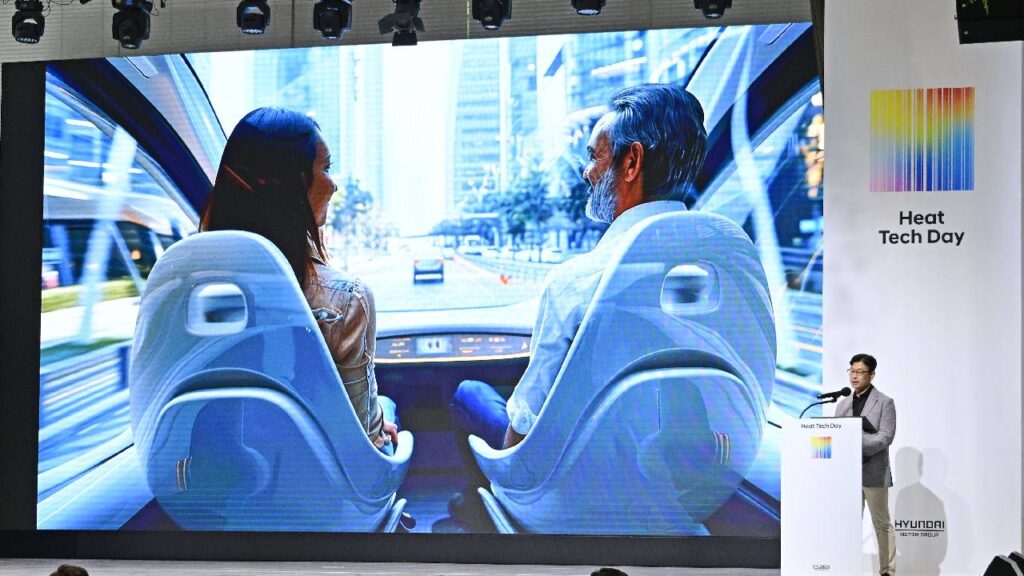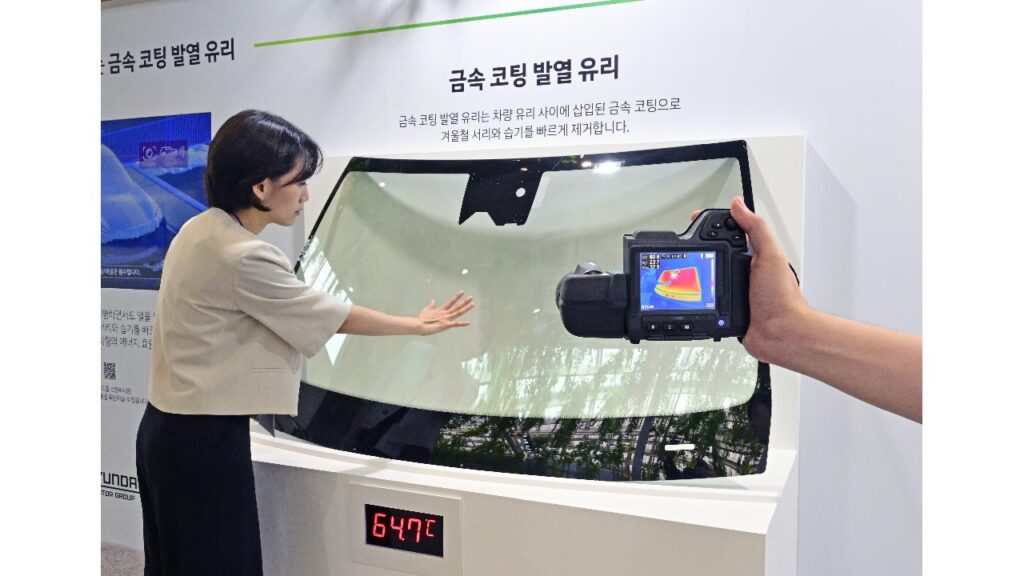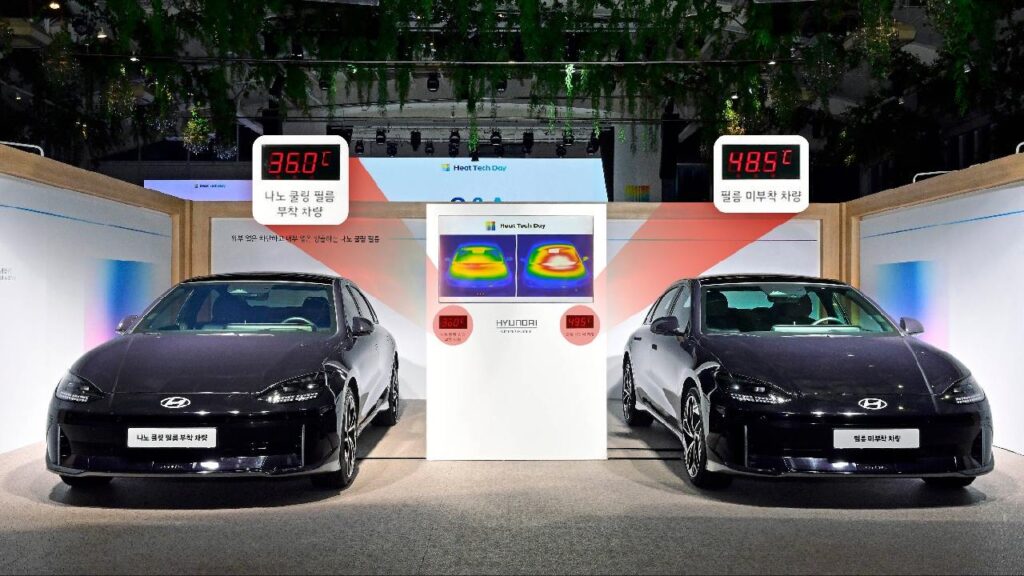The Koreans are coming up with innovative technologies to improve the efficiency of their EVs.
Hyundai and Kia demonstrated three new temperature control technologies to elevate passenger comfort and energy efficiency in their EVs. These include – Nano Cooling Film, Radiant Heating System and Metal-Coated Heated Glass. The announcement occurred on the ‘Heat Tech Day’ in Seoul, South Korea on August 26, 2024. All three technologies are at the level of technological maturity suitable for mass production.
Vice President and Head of Thermal Energy Total Development Group at Hyundai Motor Company, Young Ho Jung said, “The three technologies unveiled today are closer to customers than any other technology. We are developing technologies to provide the most pleasant environment, considering every moment that customers experience in mobility.”

You might also like: Hyundai Ioniq 6 N Spotted For The First Time Ever
Hyundai and Kia Temperature Control Technology
Nano Cooling Film
This technology was first unveiled by Hyundai and Kia back in July 2023. It can lower the vehicle’s interior temperature substantially. In a comparison between an EV with this film and without it, a temperature difference of 12.5°C was recorded. The Nano Cooling Film blocks the infrared radiation from the outside and allows heat to escape from the inside. In total, there are three layers in this film – two layers reflect solar energy and one layer emits mid-infrared wavelength. You can use it with existing tinting films without further impacting light transmission.
Radiant Heating System
Next up, we have the Radiant Heating System which can warm passengers during winters pretty quickly. It can warm the body within three minutes even in extreme cold external temperatures. In doing so, it can conserve up to 17% more energy. It consists of a high-temperature film-type heating element which can reach 110°C, which is wrapped in a fabric material to limit the infrared rays. There is also a burn prevention system in place for safety. Interestingly, the Kia EV9 already uses this tech which includes 9 heating panels. These are on the steering column base, driver’s door, center console, passenger’s door and glove box base.
Metal-Coated Heated Glass
This technique effectively removes frost or moisture from the windshield of the car. This is particularly helpful during winter. The 48V system can completely defrost the glass surface within five minutes at -18°C, up to four times faster and consuming around 10% less energy compared with conventional air-conditioning systems. The process is much faster than regular tungsten wire heating elements. This glass is invisible ensuring a clear and undistorted view of the outside. Additionally, on hot days, the metal coating can passively block at least 60% of solar energy. This reduces the cooling requirement, in turn, improving energy efficiency.

You might also like: New Off-Road-Focused Hyundai Ioniq 5 XRT Spotted Testing
Learn Electric Cars Says
Hyundai Motor and Kia have applied for patents for Metal-Coated Heated Glass in major domestic and foreign markets, with plans to implement the technology in future vehicles. These are some rather unique and creative ways to eventually positively influence the range of an EV. While extensive work is underway in battery technology development, such methods can also make a relatively significant difference in upcoming EVs.


Pingback: Hyundai Plans 2 Million Annual EV Sales By 2030, New EREVs